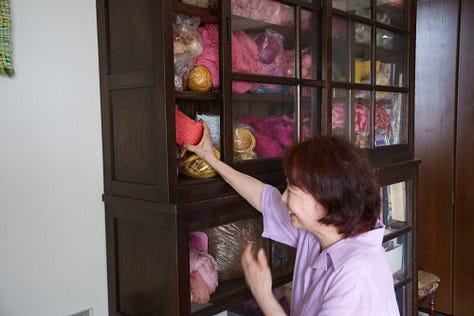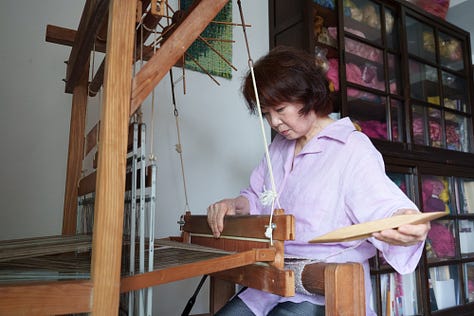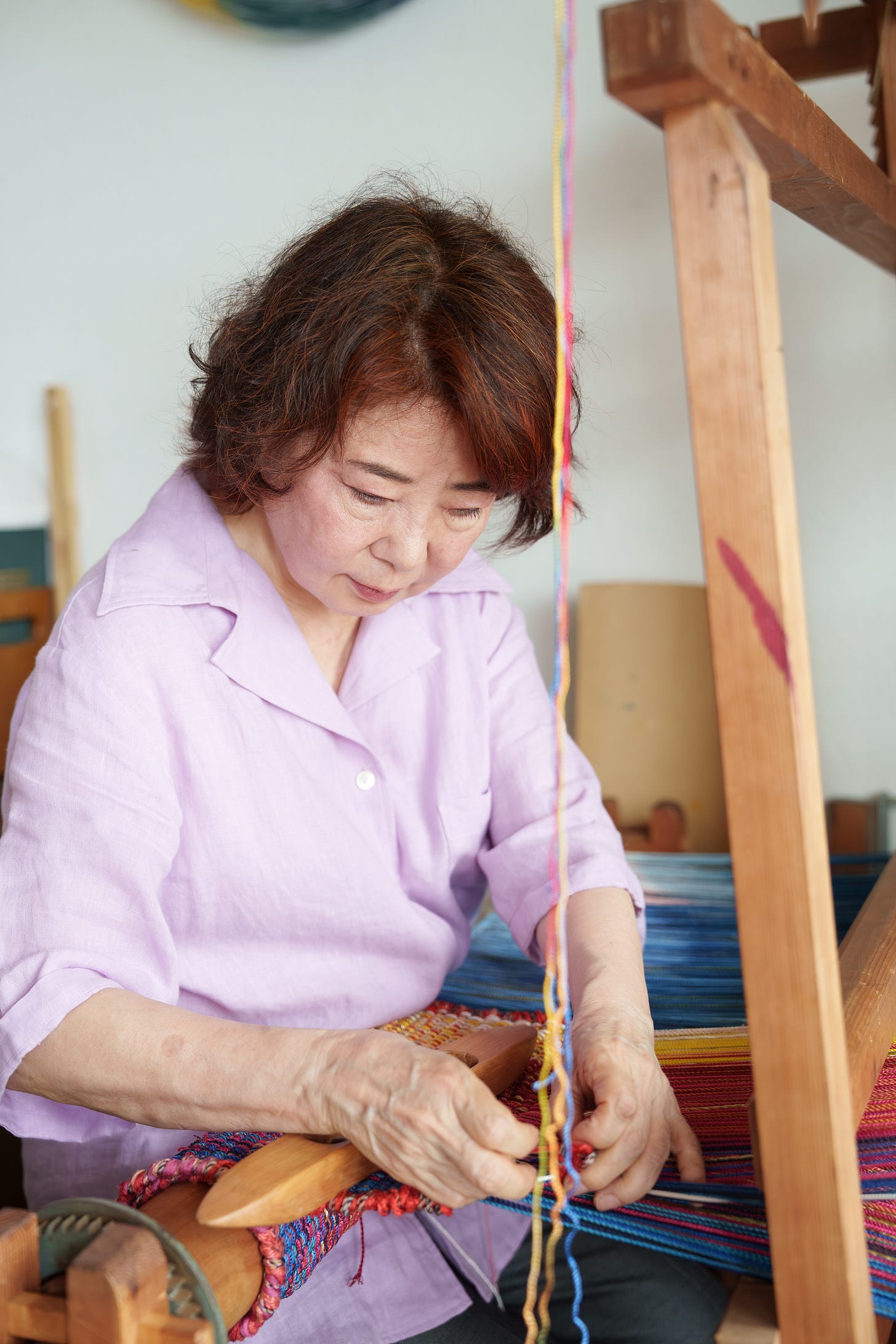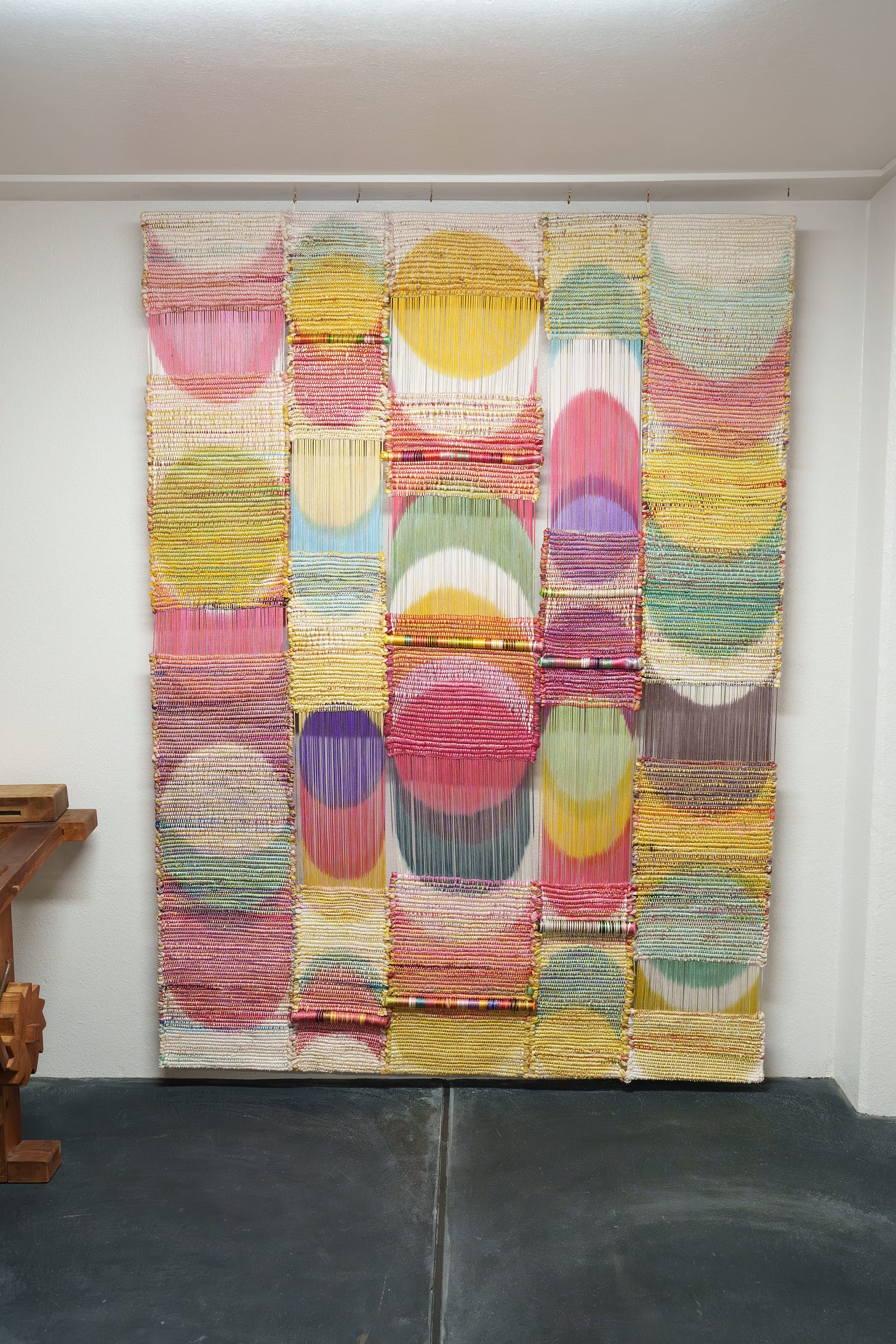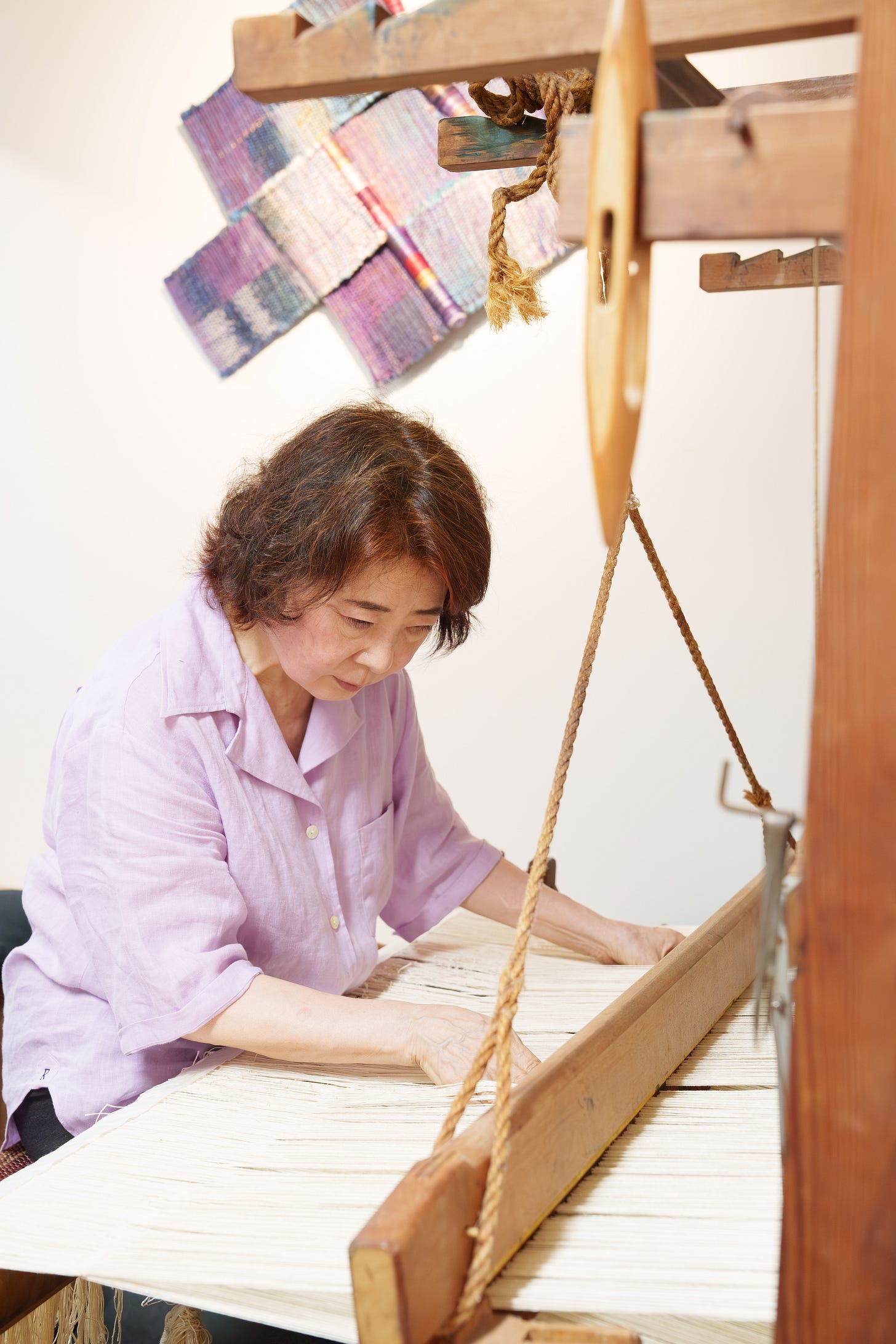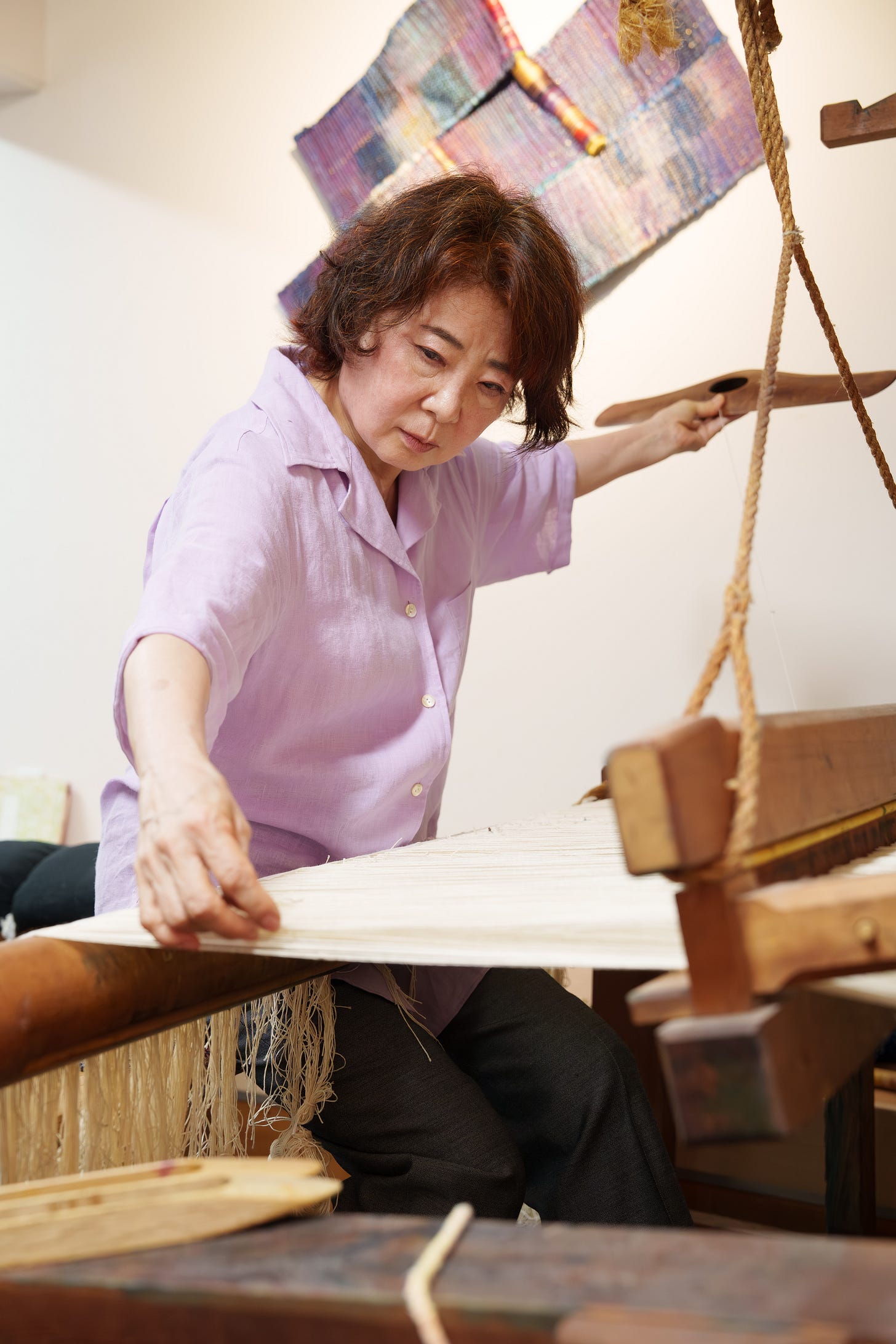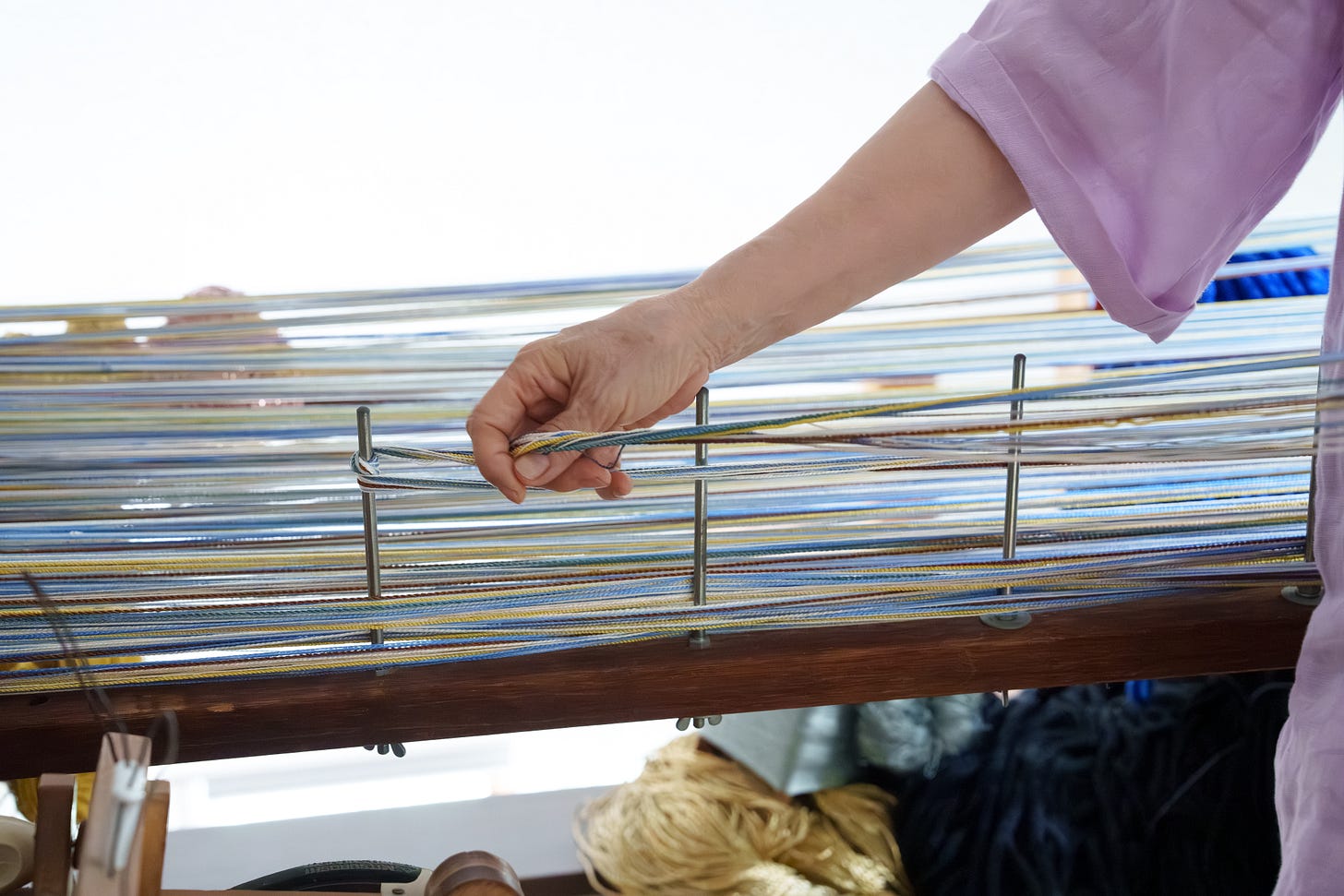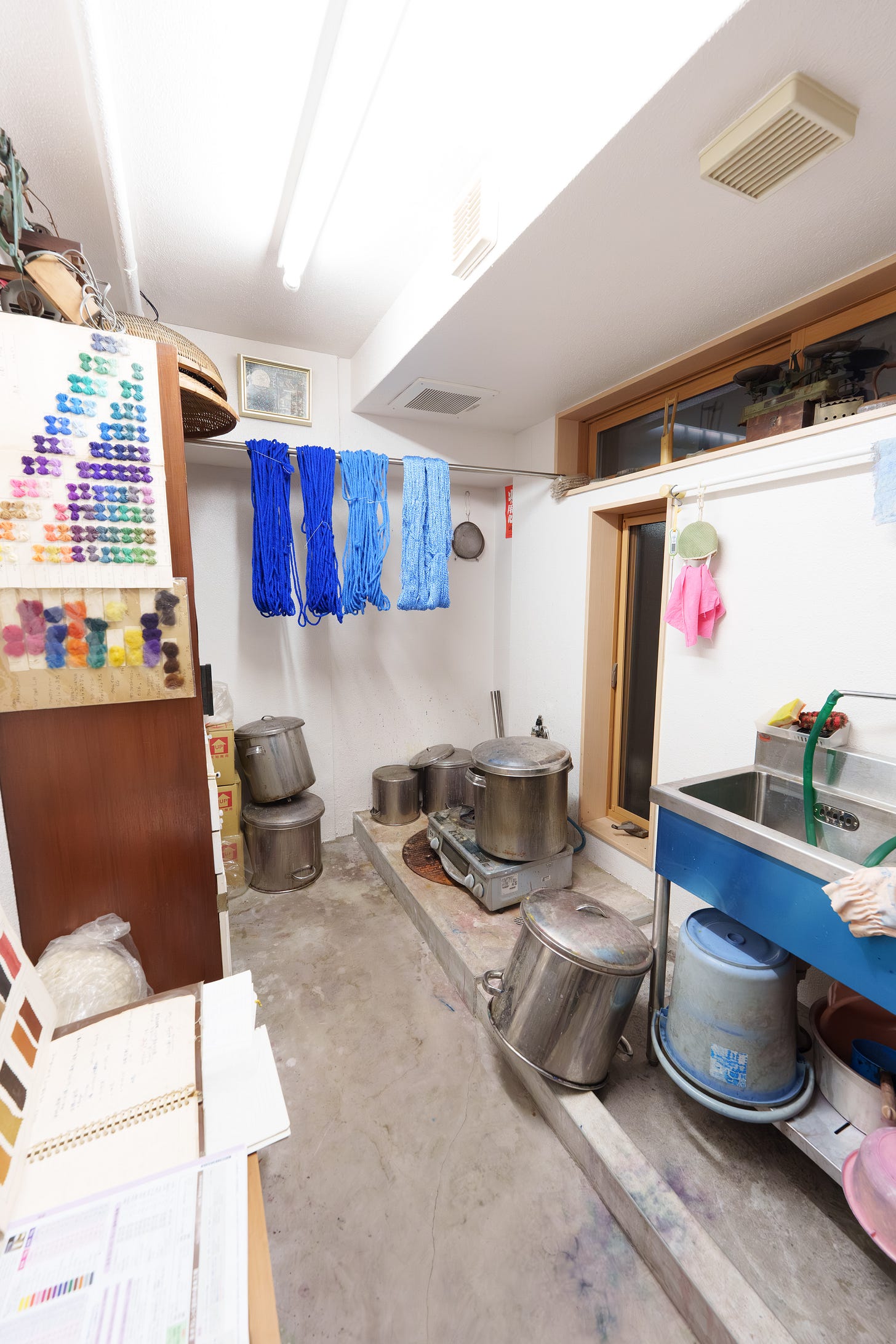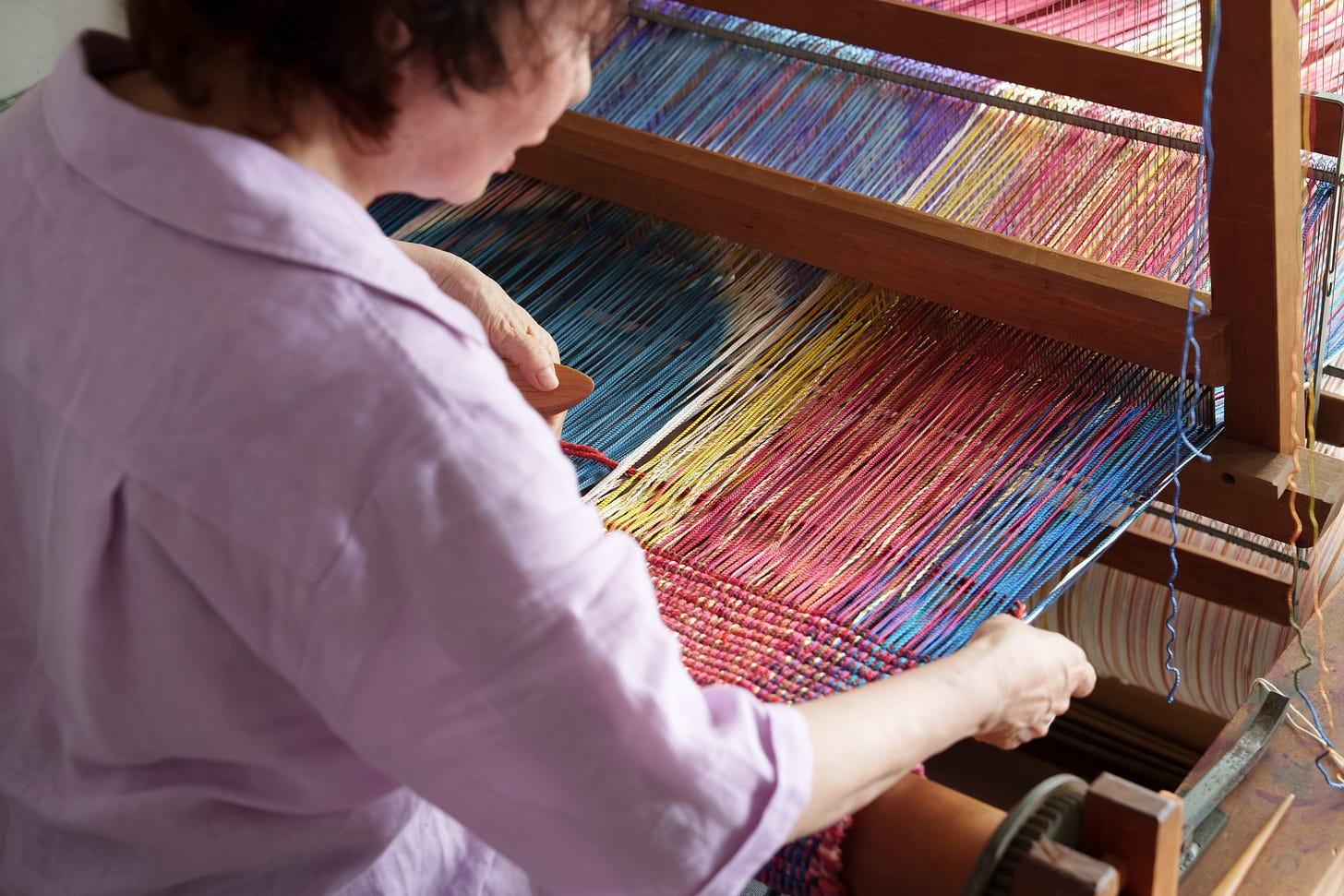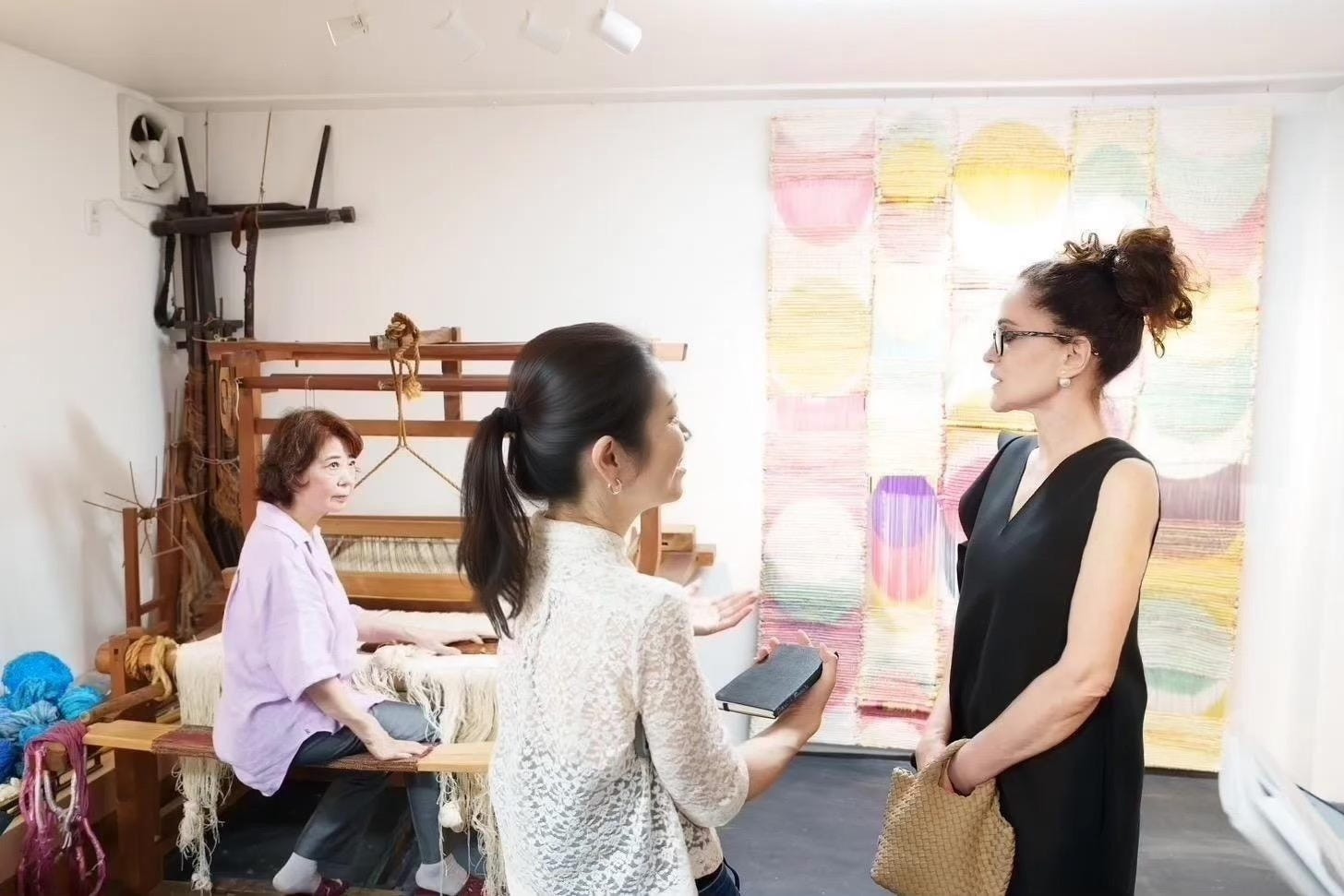Japan's New Craftspeople: Mitsuko Asakura
Traditions and Innovations: The Kyoto Story
Asakura Mitsuko (b. 1950)
To award-winning textile artist Asakura Mitsuko, tapestries are a form of architecture, much like their roles in the Middle Ages, when they were used to insulate cold castles and churches and to bring artistic sensibilities to the interiors. Her colorful tapestries, she told me, are meant to introduce a new spirit to spaces, to add a personality, and to bring a sense of warmth and intimacy. In her studio at home in Kyoto, Asakura has worked as a visual artist for decades, and her oeuvre continues to grow and shift dynamically, becoming more energetic, more colorful. In recent years, she has introduced a new and innovative technique, where she leaves part of the warp unwoven and has it painted in her personal voice.
Asakura was born and raised in Kyoto and continues to call the ancient city home. Kyoto, she told me, is ‘the mecca of textiles,’ as the heritage of weaving and dying dates back to the 5th century, when it was developed into the center for crafting silk brocades, used for elaborate kimonos and obis. Her hometown inspires her work, connecting her to her heritage, while contemporary art has kept it growing and evolving. Asakura has fond memories of growing up in her father’s textile studio, where she would watch him diligently at work with his apprentices as they dyed textile fibers. A robust set of memories has fueled her ambition to become a weaver, and particularly memorable and powerful are her visits to Kyoto’s annual Gion Festival, where she reveled in the parades of imposing floats designed to symbolize divine spirits and covered with intricate European tapestries. When she first started working on a loom, she was 16.
At her studio, set at her home in the Gosho-Minami neighborhood of Kyoto, Asakura has created tapestries for decades, bringing a contemporary allure to the world of Japanese fiber art. The basement of the house is set for dyeing. Here, she dyes silk fibers using leaves, bark, wood, roots, flowers, nuts, minerals, and insects, which she collects in the open fields of Kyoto. On the second floor, she has created her private sanctuary for weaving, filled with antique looms, a traditional spinning wheel, and an endless array of vibrant yarn boxes.
Every tapestry begins with raw fibers and is created in the basement of the house, dedicated to dyeing. Here, she mixes and cooks various flowers and plants that she finds in nature. Her colors are vibrant, energetic, and powerful. She is not afraid to use the most dynamic colors and to combine them into unique palettes. Her looms are old, typical of the practice of Japanese craftspeople who are passionate about preserving elaborate techniques to produce decorative textiles and other items. She studied weaving techniques in Italy and in the Netherlands.
For Asakura, the act of dyeing and weaving is spiritual; she believes these processes bridge the old and the new. She sees textile art as “feminine” and tapestry making as a kind of childbirth. While spinning on the old wooden wheel, she explained to me that each tapestry is influenced by everything that surrounds its creation: the season, temperature fluctuations, thread quality, and dye quality. There is nothing generic about her work, and each production presents its own unique conditions and challenges; therefore, no two tapestries are alike. “I listen to the voice of the threads,” she told me, “to devise each step of the process.”
Around the turn of the millennium, Asakura first developed her iconic Waltz series. Composed of small, discrete dots of color, these novel, Pointillism-inspired tapestries feature brilliantly hued patterns that seemingly dance before your eyes. This body of work generated tremendous interest and attention from interior designers and collectors when recently shown in New York and in Palm Beach by collector Lisa Perry’s Onna House, an art space in East Hampton dedicated to supporting women artists, designers, and makers.
Photography by © Takuro Kawamoto.
This visit was made possible by Sokyo Gallery.
